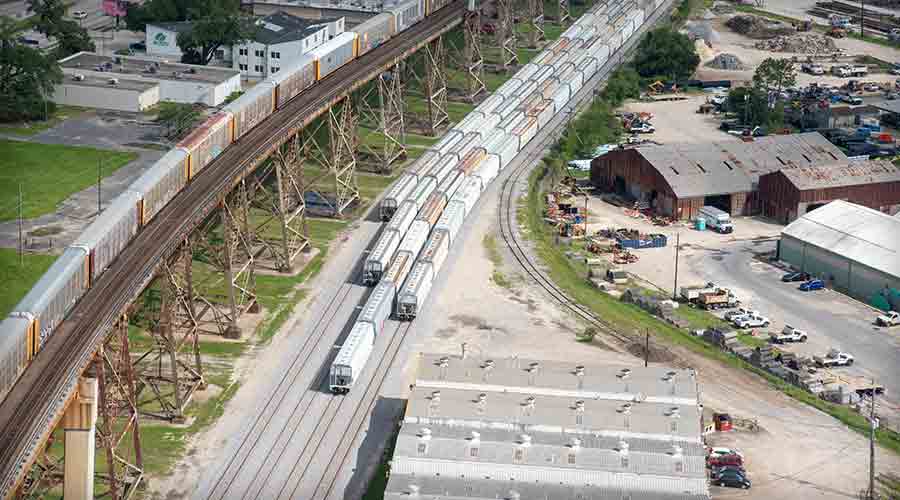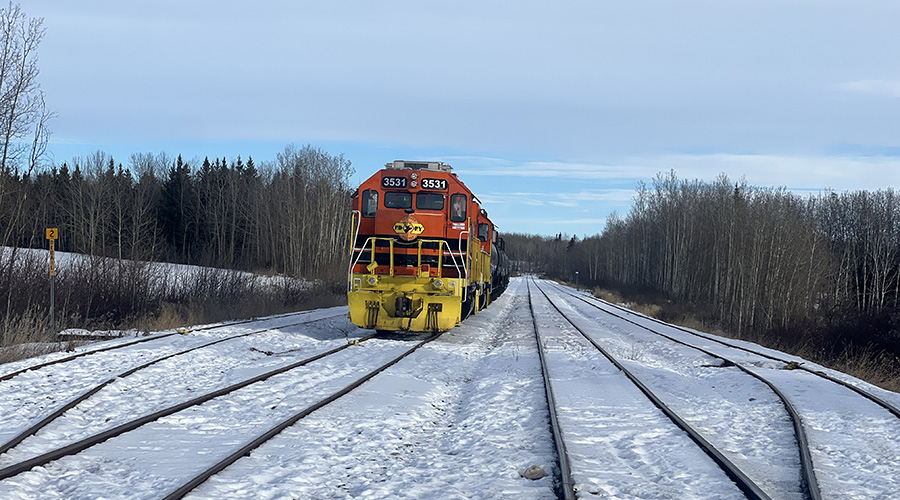New Orleans Public Belt eyes business boost from car storage yard, transload park
2/24/2023
By Jeff Stagl, Managing Editor
Last year was a remarkable one for the New Orleans Public Belt Railroad (NOPB), and 2023 figures to be notable, too.
The railroad’s car volume in 2022 increased 1.9% year over year. Although demand in a number of commodities helped propel that growth, NOPB’s two main traffic drivers — petroleum and plastic resins — continued to rebound from a downtick during the pandemic, says Tomeka Watson Bryant, the regional’s general manager.
One petroleum customer switched from crude oil to renewable diesel, which is growing in popularity and volume, she says. In terms of plastic resins, production keeps improving but hasn’t yet fully recovered.
NOPB is a regional owned by the Port of New Orleans, the only deepwater U.S. port served by six Class Is: BNSF Railway Co., CN, CSX, Kansas City Southern, Norfolk Southern Railway and Union Pacific Railroad.
As measured by car volume, NOPB’s network ranks as the nation’s fifth-largest rail gateway. The regional operates 26 miles of mainline track and 75 miles of overall track, as well as a main classification yard in uptown New Orleans, two additional yards near downtown and four storage yards.
While higher car volume was encouraging, the major contributor to NOPB’s business growth last year was rail-car storage services, says Bryant. Car storage volume climbed 9% compared with 2021’s level.
“Car storage has helped diversify our revenue stream after COVID,” says Bryant.
 The railroad’s two main traffic drivers — petroleum and plastic resins — continued to rebound in 2022 from a pandemic slowdown. New Orleans Public Belt Railroad
The railroad’s two main traffic drivers — petroleum and plastic resins — continued to rebound in 2022 from a pandemic slowdown. New Orleans Public Belt Railroad NOPB stores a variety of cars for customers, including plastic resin cars coming from the Baton Rouge, Louisiana, area, empty cars and local customers’ cars.
“Maybe a local customer calls us to say they need to store 30 cars for 30 days,” says Bryant.
Depending on freight volume, NOPB can fill 1,580 to 1,650 total car spaces. The regional gained more car storage capacity from a new yard that opened nearly two years ago and will reap more from a new yard set to open later this year.
In 2019, NOPB landed a $7.3 million Consolidated Rail Infrastructure and Safety Improvements Program grant from the U.S. Department of Transportation to help fund additional yard space to switch, interchange and store cars. That led to the creation of Kingfish Yard, which opened in 2021 with 200 car storage spaces. French Yard — which is scheduled to open in July — will feature 230 spaces.
“We have had 95% to 100% of our storage capacity used and keep pushing the railroad to optimize the capacity,” says Bryant. “We try to turn cars faster to keep up the capacity.”
 Ranked as the nation’s fifth-largest rail gateway, NOPB’s network needs to remain as fluid as possible, says GM Tomeka Watson Bryant. New Orleans Public Belt Railroad
Ranked as the nation’s fifth-largest rail gateway, NOPB’s network needs to remain as fluid as possible, says GM Tomeka Watson Bryant. New Orleans Public Belt Railroad Meanwhile, a grant of another sort will help fund another business-boosting project. In November 2022, the Louisiana Department of Transportation and Development announced it would provide NOPB a $1.5 million grant for a transloading industrial park to be developed on Terminal Road in New Orleans East.
The regional is working with the port on the park, making it their first joint infrastructure venture as two aligned organizations. The project is in the design and engineering phase, with construction pegged to start in fall and conclude sometime in 2024.
The park targets companies hoping to enter the New Orleans market and those that seek to expand in it, says Bryant.
“It will help us continue to focus on growing and expanding our network, while maintaining an efficient and fluid railroad,” she says. “The project will strengthen the NOPB and port gateway.”
That’s key because it’s a very busy gateway.
“Our goal is to keep the gateway as fluid as possible,” says Bryant.


